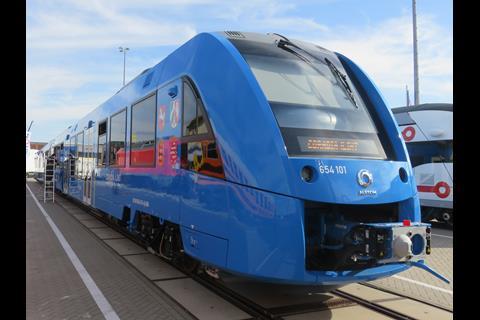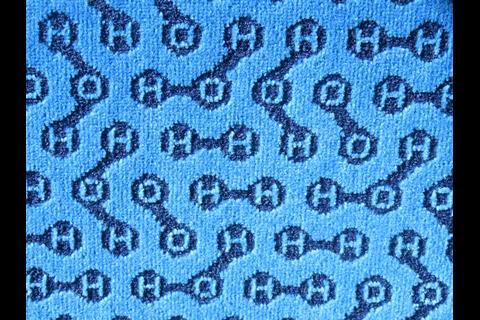INNOTRANS: Alstom expects to sign a firm order for a production build of hydrogen fuel cell powered multiple-units by the end of the year, Coradia LINT Product Manager Stefan Schrank told Railway Gazette on September 20.
The expected initial firm order would cover units for service in Nordrhein-Westfalen. Alstom has already signed letters of intent with four German Länder covering a total of 60 trainsets, and anticipates firm orders for between 40 and 70 units by the end of 2017.
Schrank was speaking at InnoTrans following the unveiling of the first of two pre-production iLINT fuel cell multiple-units which are to be tested on regional services around Hannover under an agreement with the Land of Niedersachsen.
The two pre-production units are owned by Alstom, which plans to conduct testing throughout 2017, including at the Velim test circuit. Type approval from Germany's Federal Railway Office is expected by the end of 2017, enabling the start of trial passenger running around Hannover in late 2017 or early 2018.
The fuel cell trainsets have the same bodies, bogies and drive equipment as the conventional diesels, and the two units will directly replace two diesel units to provide a real-world comparison of performance.
The hydrogen tanks and fuel cells are mounted on the car roofs, with the tanks carrying 94 kg of hydrogen per car, enough for around one day or 700 km of operation. The fuel cells were supplied by Hydrogenics, after Alstom took a decision to partner with an experienced specialist rather than develop its own technology. The fuel cells are linked to lithium ion batteries from Akasol.
Alstom anticipates that operating costs will be comparable to diesel units. The environmental footprint of the trainsets will depend on how the hydrogen is produced; under Germany's current electricity generating mix and electrolysis produces an unfavourable comparison to diesel, but the generating mix predicted for 2020 would make the hydrogen greener, Schrank said.
He sees a bright future for fuel cells, which he believes have now reached a comparable level of development to diesel engines 100 years ago.




















